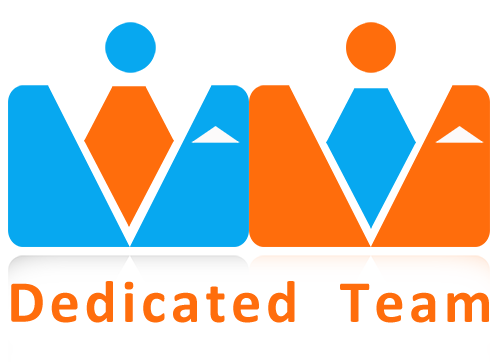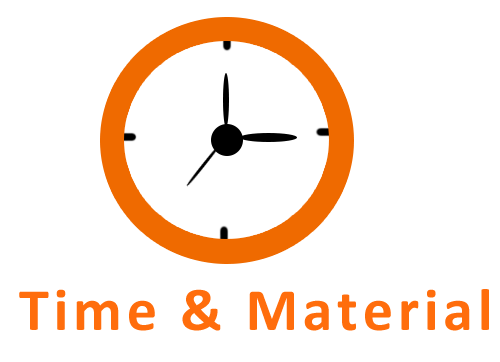
How We Work
The waterfall development method seems to be ideal for the software development, as it gives the development team comprehensive and complete requirements before designing and coding. However, based on our past experience, changing in requirements is mostly common during the software development. Therefore, we have been an advocate for the agile software development method. We believe the agile method can bring great value to projects because it enables quick responses to changing requirements.
Agile methodology uses the incremental approach to both planning and development. The initial requirements will be analyzed and broken into "user stories". The development process will be divided into multiple phases, which are called as sprints. The user stories will then be added to each sprint based on its priority, and they are expected to be completed in the sprint. Once a sprint is finished, the sprint summary will be conducted and its user story accomplishment will be assessed.
If there is a requirement change, we will adjust this change to the "user stories" backlog; which means we might need to add, remove or modify the user stories. In this case, the priority of the leftover user stories in the backlog will be re-assessed. In a new sprint, the adjusted user stories will be added and the iteration starts again.
Upon the delivery of the project, you will receive:

Please click on each development stage below for more information about how we work and the outputs of each stage.
Agile methodology uses the incremental approach to both planning and development. The initial requirements will be analyzed and broken into "user stories". The development process will be divided into multiple phases, which are called as sprints. The user stories will then be added to each sprint based on its priority, and they are expected to be completed in the sprint. Once a sprint is finished, the sprint summary will be conducted and its user story accomplishment will be assessed.
If there is a requirement change, we will adjust this change to the "user stories" backlog; which means we might need to add, remove or modify the user stories. In this case, the priority of the leftover user stories in the backlog will be re-assessed. In a new sprint, the adjusted user stories will be added and the iteration starts again.
Upon the delivery of the project, you will receive:

Please click on each development stage below for more information about how we work and the outputs of each stage.
Flexible Business Models

If you have your own management team and well-defined project idea, we can provide you a dedicated team of developers and designers who will work particularly on your project from the very beginning up to the release, along with your existing team. This type of cooperation is best suitable for:
Employee Levels and Costs
Our software engineers are divided into 3 groups depending on their experience and skills:
In order to provide our clients with easy and quick pricing, we have established the broad based pricing model called Fixed Monthly Employee Cost. This model assumes that the fixed monthly cost will be decided per each employee for a particular period of time (starting from a half-year). Each employee will have a two-month probation period in your project, during which the contract can be dominated by either party with just only one-week notice in advance.
- Project team with a well-defined existing client team.
- Projects with specific time limits.
- Projects with resources that need to be easily escalated.
- Projects with only basic requirements and development plan.
Employee Levels and Costs
Our software engineers are divided into 3 groups depending on their experience and skills:
| Level | Experience | Cost (per hour) |
| Junior Engineer | up to 3 years | USD11 - USD13 |
| Mid-level Engineer | over 3 years | USD15 - USD18 |
| Senior Engineer | over 5 years
(with advanced skills in particular technologies) |
USD20 - USD30 |
In order to provide our clients with easy and quick pricing, we have established the broad based pricing model called Fixed Monthly Employee Cost. This model assumes that the fixed monthly cost will be decided per each employee for a particular period of time (starting from a half-year). Each employee will have a two-month probation period in your project, during which the contract can be dominated by either party with just only one-week notice in advance.

Time & Material model is developed for long-term projects while it is difficult to estimate the required resources and thus planning the budget. This model provides you a possibility to pay for company's services in parts according to the payment agreement specified by the contract. After both sides have reached an agreement on the time limit, software, hardware, human and other resources required for your project, we will invoice your monthly charge. This type of cooperation is best suitable for:
- Projects of which the final cost is difficult to predict.
- Projects with vague requirements and resources.
- Projects of which the development plan needs revision.
- Projects with incomplete or unavailable technical documentation.
- Projects with changeable customer requirements depending on different factors.
- Company/project team which is seeking for a long-term cooperation partner.

Fixed Cost is an ideal variant in case if a client has determined the specifications of his project clearly. At this rate, we will analyze the client's requirements in order to estimate the cost of the project, its delivery date, and then work out a detailed plan of the project completion. This type of cooperation is best suitable for:
- Projects with clear specifications and deadline.
- Projects with determined development plan.
- Projects with designated resources.
- Projects with well-prepared technical documentation.
- Company/Project team which is seeking for a project-based cooperation.
